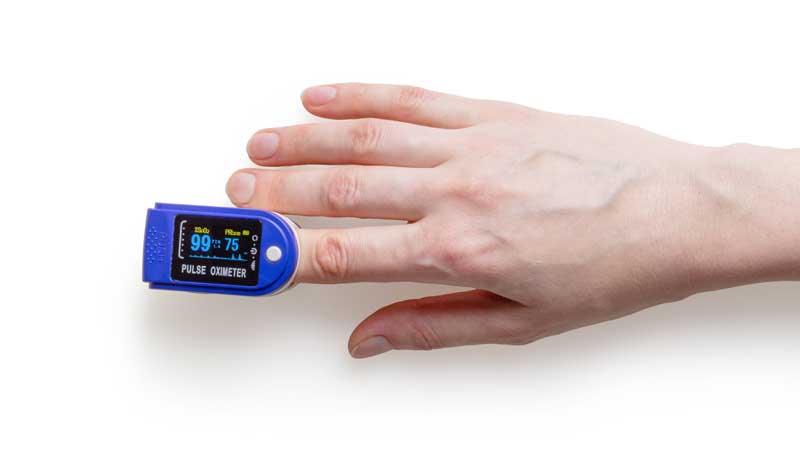A popular device that can be purchased over-the-counter is a pulse oximeter. It’s a device that can be placed on your finger (or toe) that measures the oxygen saturation level of your blood. Certain smart watches available on the market can also measure oxygen concentration of blood.
It is non-invasive, not painful, rapid, easy to use, and the measurements can be performed in the comfort of your own home.
These devices have become popular during the time of COVID-19 pandemic when knowing oxygen concentration of blood is crucial. A typical pulse oximeter also provides a reading of the heart rate.
Pulse oximeters measure changes in light absorption in blood. Amount of oxygen in the blood is measured with small beams of light passing through the blood in the digit being measured.
Healthcare professionals often use pulse oximeters to monitor blood oxygen levels of people who suffer with lung diseases (such as COPD, asthma, lung cancer, pneumonia), heart diseases (such as heart failure, coronary artery disease, or congenital heart disease), sleep apnea, and anemia. This is done at the hospital, the office, during sleep studies, during medical procedures that require anaesthesia, or at home.
How to take a reading at home
- Remove nail polish from the digit you are using for measurement.
- Make sure your hand is warm, relaxed, and below heart level.
- Place the device on your finger, earlobe, or toe.
- Keep the pulse oximeter on the digit as long as necessary to obtain a measurement. Fingertip readings may be delayed by 30 seconds and toe readings by 90 seconds.
- Remove the device once the test is over.
Pulse oximetry readings
An oxygen saturation level of 95 percent or greater is considered typical for most healthy people.
A level of 92 percent or lower can indicate potential hypoxemia, which is a seriously low level of oxygen in the blood and considered a medical emergency.
Various factors can affect readings, including a person’s skin tone, poor arterial blood flow in the measured extremity, low blood pressure, low temperature of the measured extremity, hypothermia, nail polish, artificial fingernails, motion, and exposure to excessive light.

